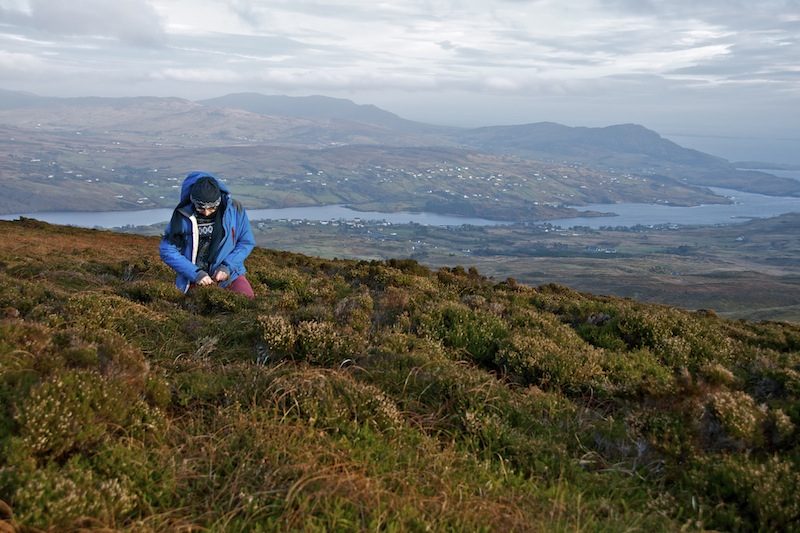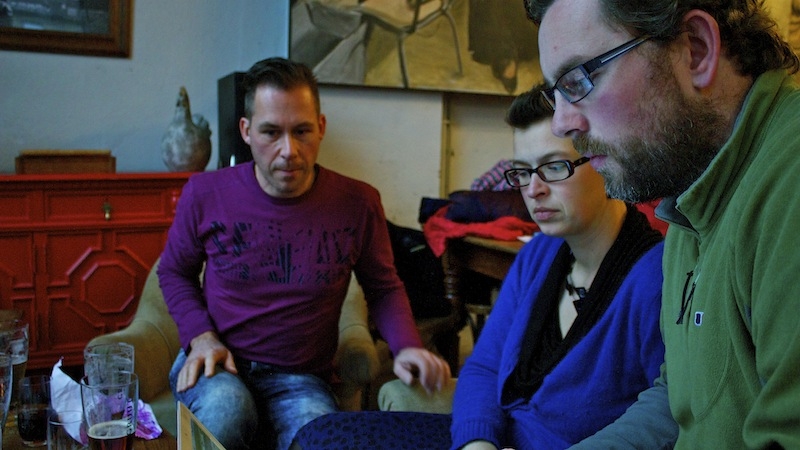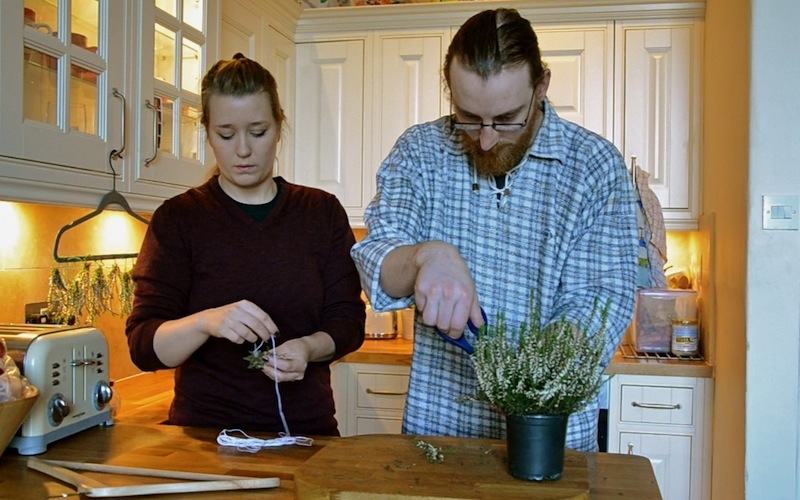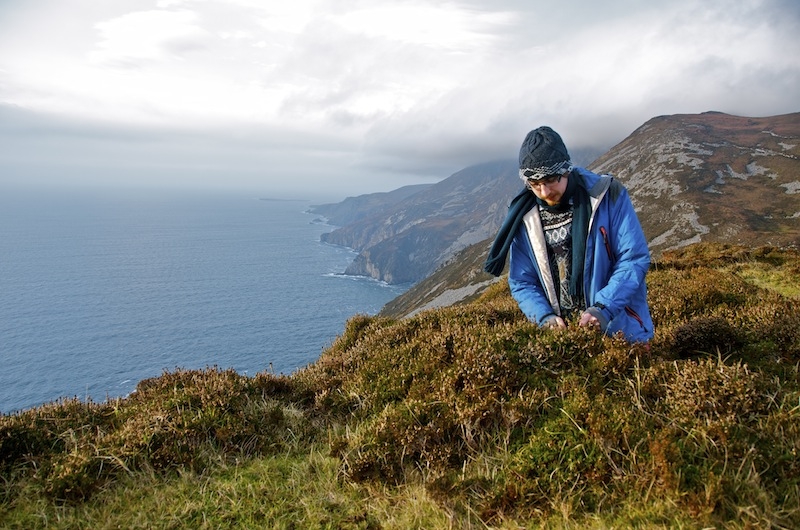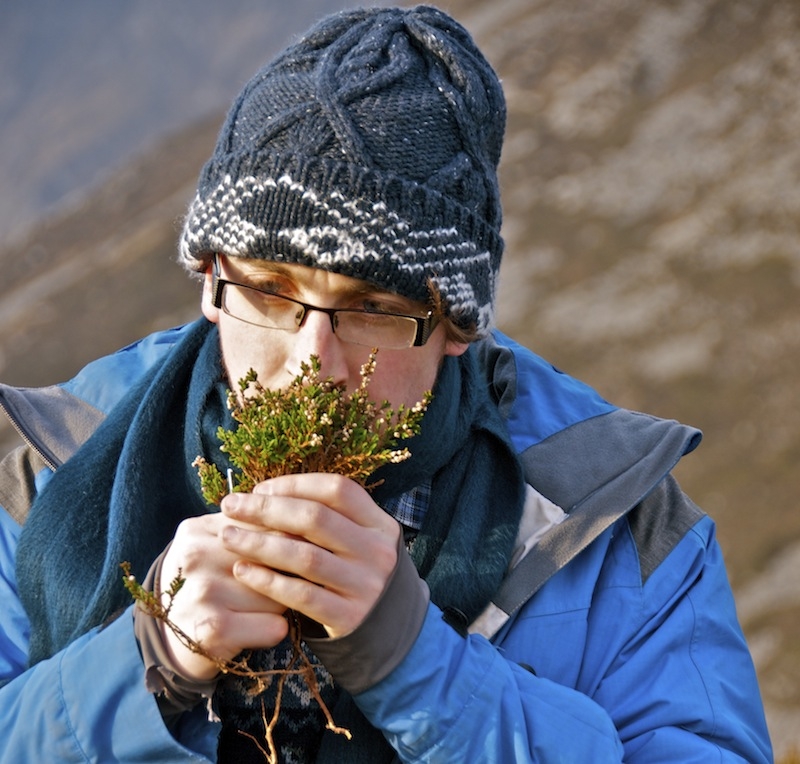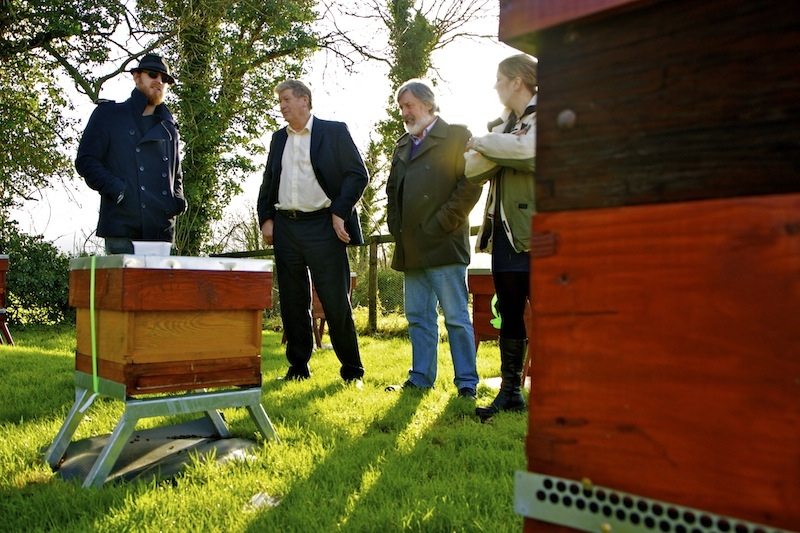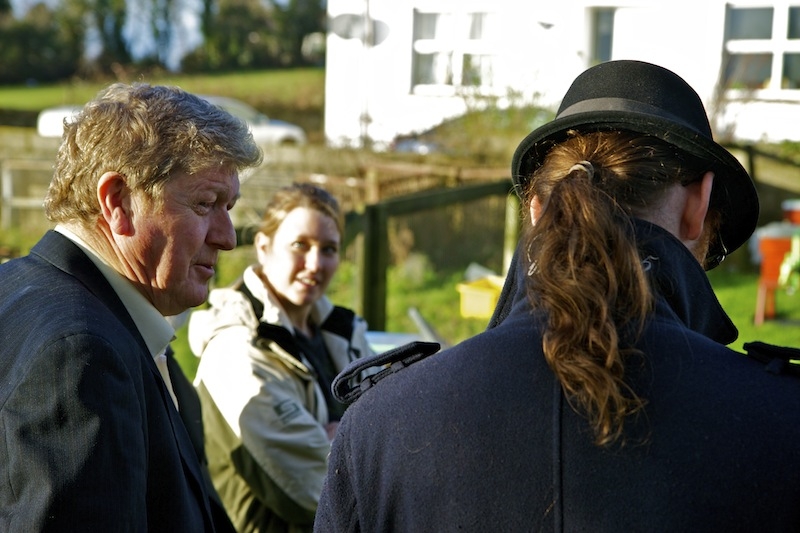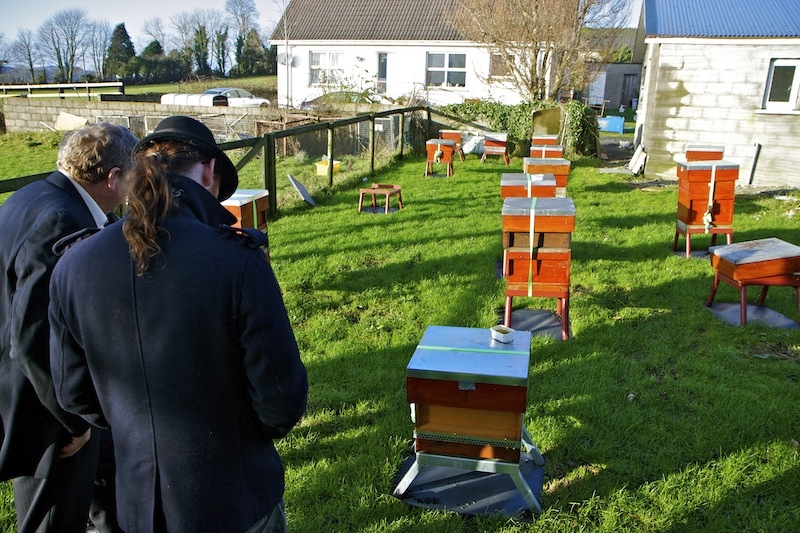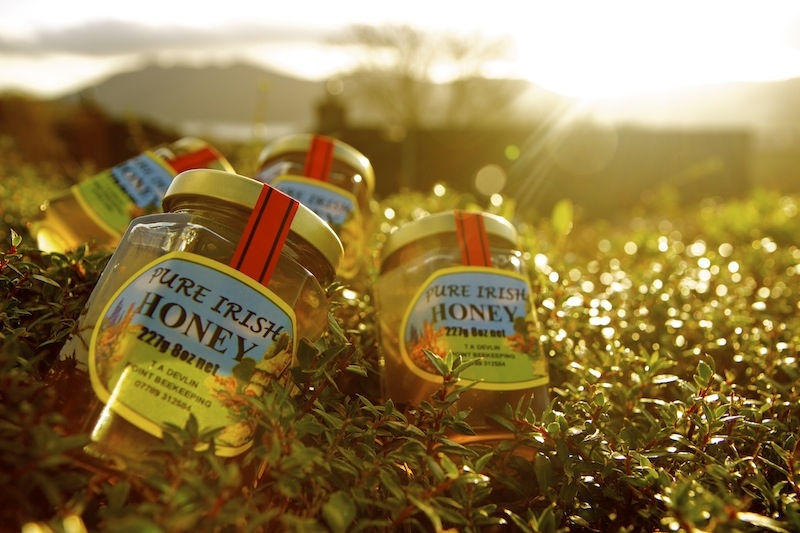Weddings are extremely symbolic. Two people are joining forces. Two families are united.
And on this occasion, Mike and Fiona are also bringing together their families from Scotland and Ireland.
A beer made to celebrate their wedding should reflect that.
MARRYING THE ROAD TO PORTY INGREDIENTS
But let’s not forget that this will be a Belgian beer.
Belgium is a place of quirky villages, linguistic inconsistencies and interesting characters.
Picture a windswept mountain-top, classically Celtic in its wild browns and greens, as the Scottish ingredient – a gangly young boy wearing tartan kilt and highland bonnet – invites his friend, the Irish ingredient, to play on the hill side. She is a little girl drowning in her Aran sweater and handwoven tweed jacket, with hair as red as a Rodenbach Grand Cru. It flames out from her patchwork linen cap. All they want to do together is dance on the heath.
All the while, the Belgian father looks on, waiting for the time when Scotland and Ireland get tired so that he can carry them safely from the mountain side to a lowland refuge and tuck them into bed. Just like the street workers of 19th century London where this style of beer was born, the Belgian father knows his job of work: to look after his ingredients; to carry them to safety. He’s a Belgian porter, you see.
So what ingredients should we use? What characteristics will they give to the beer? And how do we go about getting them?
1. HEATHER FROM SCOTLAND AND IRELAND
The first ingredient that springs to mind when talking about ‘Scotland’ and ‘beer’ is, of course, heather.
We tasked Mike and Fiona with getting their hands on some heather from Scotland that we could use in the beer.
It turns out that heather has as much of an Irish identity as it has a Scottish one. This is highlighted by beer historian Martyn Cornell in his article ‘Heather ale: Scots or Irish?’.
Cornell explains the reasons why heather is almost exclusively associated with Scotland (most notably due to Robert Louis Stevenson’s poem ‘Heather Ale: A Galloway Legend’ and the success of the Williams Brothers Fraoch Heather Ale which was first brewed commercially 27 years ago) before using a range of well-researched and convincing literary, historical, folkloric, linguistic and brewing sources to evidence the use of heather in Irish brewing way back when.
Having discovered this, we decided we needed some Irish heather too. On our new year’s trip to Donegal, Oisín helped Elisa, Sophie, Andries and I pick some fresh heather from the hilltops of Slieve League, a dramatic Atlantic-facing landscape and purportedly the highest sea cliffs in Europe. It is wild, dramatic and very beautiful. Continue northbound and the next stop is Iceland.
So now we have our heather from Scotland and Ireland. But what does heather do in beer? And how do you use it?
There isn’t a lot of accessible information about brewing with heather available and most of what we have found relates to brewing ‘heather ale’ in situations where hops are being completely replaced by heather. That of course is not the case in ‘Road to Porty’ as we intend to use Hallertau Spalt Select, a noble hop variety from Germany which we believe will contribute low levels of bitterness, a mild spice and wood character with subtle floral aromas and maybe even some undertones of ripe berry and citrus.
The heather, on the other hand, is believed to have a flavour similar to a light chamomile/mint blend with a hint of lavender and we would hope to inject our beer with these qualities in an almost understated way. As brewer of Road to Porty Franklin puts it, “the heather should be so subtle that you can hardly notice it, but if you took it out, there would be something missing from the beer”.
Currently, we’re inclined to put the heather in for the full boil to take advantage of its character but to guard against an intense flowery aroma that might develop from a later addition or a ‘dry heathering’.
2. IRISH HONEY FROM WARRENPOINT, CO. DOWN
When I mentioned at home over Christmas that we were on the look out for ingredients local to the places where Mike and Fiona come from, my parents mentioned to me that a beekeeper lived exactly one mile from where we all grew up together.
So when we were home for Christmas, we called up to the Ballydesland Road to meet this beekeeper – Terry Devlin – and ask him if we could get ourselves some Irish honey for the beer.
Terry is a passionate beekeeper with over 30 year’s experience in local beekeeping associations. He offers practical advice to anyone seeking support in beekeeping or honey testing and works hard to increase awareness of the needs and benefits of bees to agriculture, commerce and the environment.
Curious about our strange project, he invited us in to his house for a chat about the beer before taking us on a short tour of his beehives. Before parting, we were able to buy some honey from him for ‘Road to Porty’.
Honey is actually quite a common ingredient in darker beers like porters and stouts. I have some recent personal experience of this from spending the day with 9 of Europe’s most exciting breweries at De Struise Brouwers for their Zombination project and observing their addition of honey to what will become a barrel-aged imperial stout. You can read more about that wonderful brew day here: ‘Zombination’: A Beer Brewed at De Struise Brouwers by 9 of Europe’s Most Exciting Breweries.
Honey can do a number of things for Road to Porty, most notably contributing a wonderful source of fermentable sugars (approximately 90 – 95% of the sugars in honey are fermentable).
It can deliver a smoother character and lightness to the beer than other forms of sugar, while at the same time raising alcoholic content and enhancing potency. Honey can also knock the bitter edge off hops, allowing some of their less obvious characters to be showcased. And all that buzzing activity around the various pollens and nectars that bees use in their production of honey can contribute to floral notes and aromas in the finished beer.
One of our major discussions in recent weeks has been about the amount of honey we will be putting into the beer. The general rule (sourced from valuable research by the National Honey Board in Londmont, Colorado and described brilliantly on the Brew Your Own website) appears to be that honey in the measurement of 3-10 percent of total fermentables produces a subtle floral flavour and delicate aroma; 11-30 percent produces a robust honey flavour (which we might need to balance with stronger hop flavours or spices); and anything above 30 percent will produce a beer that is dominated by honey flavour. In our discussions at the minute, we are gravitating towards an addition in and around the 7-8 percent mark.
Another major issue relates to the stage at which we actually add the honey. The Midwest Supplies website suggests that adding it: to the beginning of the boil will contribute fermentable sugar to the wort but no flavour; in the middle will give fermentable sugars and a light honey note; and to the end will equip it with a stronger honey flavour and aroma.
Another option we are considering is that in order to prevent some of the more delicate flavours and aromas of the honey being killed off during a long and furious boil, we might pasteurise the honey and add it to the fermenter, which would leave more residual sweetness and a more intense honey character in the beer.
We’ll continue to keep you updated on developments as work progresses on the recipe. It’s almost time for those Scottish and Irish ingredients to stop playing on the mountainside and for their Belgian father to carry them down to the safety of their new home in the lowlands on test batch brew day.
A special thanks to Sophie Callewaert for the photos from Donegal.


